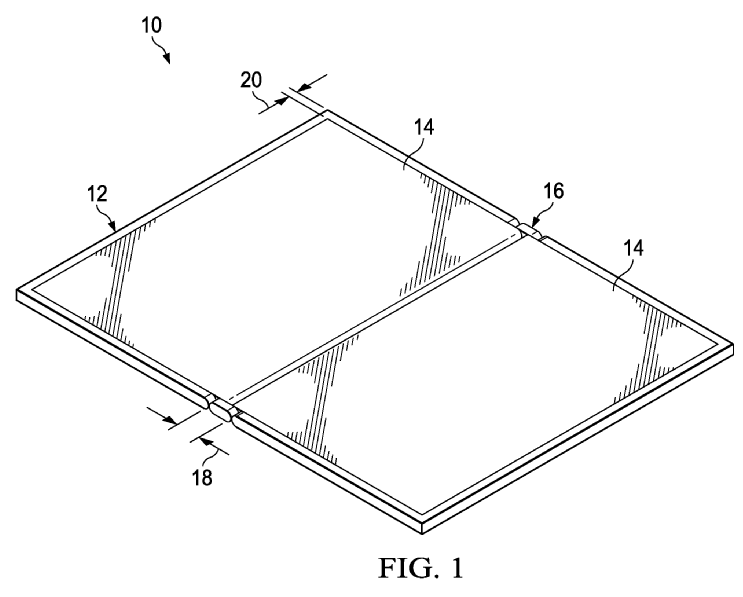Dell patents a dual-screen design for PCs, including a flexible hinge
A new patent shows a dual-screen design by Dell, potentially indicating a future device.

What you need to know
- New patents by Dell show off a design for a flexible hinge and dual-screen devices.
- The patents were filed earlier this year and published in August.
- Lenovo has shown off similar technology in ThinkPad X1 foldable PC.
Two recently published patents show off designs from Dell that could be parts of a dual-screen device (via WindowsUnited). The patents illustrate a flexible hinge and a dual-screen setup for a PC. If Dell uses these patents in a future device, the company would be joining a dual-screen movement which includes a foldable PC from Lenovo and foldable phones from Samsung and Huawei.
Patent US20190243426 was initially applied for on February 2, 2019 and later published on August 8, 2019. The description from the filing outlines how multiple displays help deliver more information to users and how current hinge designs are not optimized for dual-screen devices.
In order to enhance portability, information handling system manufacturers typically attempt to limit the height of the housing, sometimes referred to as the Z axis height. One recent innovation that has helped restrict system height is the use of organic light emitting diode (OLED) displays. OLED displays present visual images without a backlight so that the height of the display is, effectively, a thin film having OLED material and integrated wirelines that drive OLED pixels to generate defined colors. Recently, portable information handling systems have included rotationally coupled housing portions that have OLED displays on the upper surface of both housing portions. The result is two displays that open like a book and provide the user with flexibility to use both displays for consuming content or have one display configured as an input device, such as with a virtual keyboard. One difficulty with placing the displays in close proximity is that a hinge typically has to fit between the housing portions that hold the displays. Synchronized hinges typically have gears that interconnect parallel axles and a friction device that provides torque to manage hinge rotation. Robust hinge assemblies tend to have distance between the two axles that translates to distance between the two displays of the two housing portions. (Emphasis added)

The patent goes on to describe how a dual axes hinge helps solve problems facing dual-screen devices.
More specifically, a portable information handling system has first and second housing portions rotationally coupled to each other by first and second hinge assemblies. The housing portions contain processing components that cooperate to generate information, such as a central processing unit (CPU) and memory that execute instructions and generate visual information for presentation at a display. A display integrated in the upper surface of each housing portion presents the visual information as visual images. Each hinge assembly includes narrow width dual axles that maintain the displays in close proximity for a uniform appearance that minimizes disruption of viewing of the visual information. Each hinge assembly includes a gear assembly that synchronizes housing portion rotational movement by translating rotational movement of the housing portions between each other through interlocking gears disposed on the dual axels proximate the perimeter of the housing. The gear assembly includes a bracket for each axle that couples the housing portions to the hinge assembly. To manage rotational motion and positioning of the housing portions, a torque bracket couples to each axle end opposite the gear assembly and couples to each housing portion. Each torque bracket resists rotation about its axle to generate torque independent of the gear assembly. (Emphasis added)
Patent US10394278 was applied for on March 3, 2019 and published on August 27, 2019. Notably, this patent was granted on August 27, 2019 as well. Patent US20190243426 does not list a grant date at this time. Patent US10394278 also discusses a flexible hinge. Its summary outlines how flexible sheets could be used in conjunction with a flexible hinge.

An information handling system may include a flex hinge having a first flexible sheet that bends at a different radius than a second flexible sheet when the flex hinge is transitioned from a first position to a second position. A mounting bracket fixes each of the flexible sheets to the information handling system, and a friction linkage engages with slots within the first and second flexible sheets. An organic light emitting diode is connected to the flex hinge.
As with any patent filing, these designs may never see the light of day. Large corporations frequently file patents that don't end up in any commercially produced technology. If they are used in a future device, Dell will join Lenovo, Samsung, and Huawei in the current dual-screen movement.
All the latest news, reviews, and guides for Windows and Xbox diehards.

Sean Endicott is a news writer and apps editor for Windows Central with 11+ years of experience. A Nottingham Trent journalism graduate, Sean has covered the industry’s arc from the Lumia era to the launch of Windows 11 and generative AI. Having started at Thrifter, he uses his expertise in price tracking to help readers find genuine hardware value.
Beyond tech news, Sean is a UK sports media pioneer. In 2017, he became one of the first to stream via smartphone and is an expert in AP Capture systems. A tech-forward coach, he was named 2024 BAFA Youth Coach of the Year. He is focused on using technology—from AI to Clipchamp—to gain a practical edge.
